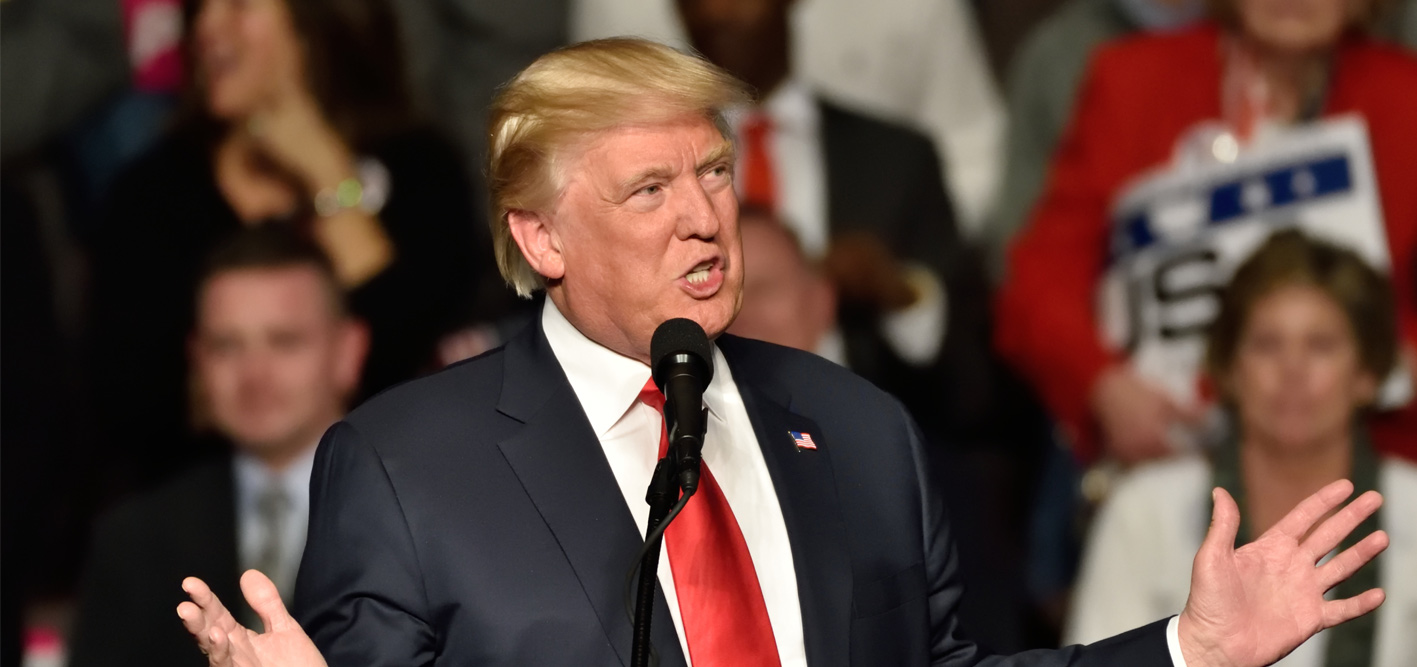The January Pulse
Highlights from the macroeconomic research ideas we have seen over the month
The value of investments can fall as well as rise and that you may not get back the amount you originally invested.
Nothing in these briefings is intended to constitute advice or a recommendation and you should not take any investment decision based on their content.
Any opinions expressed may change or have already changed.
Published on 02 Feb 20187 minute read

The idea behind the Pulse is to look at the highlights from the macroeconomic research ideas we have seen over the month. The focus is likely to be thematic and strategic with a longer-term time horizon, illustrating the influences on our thinking and investment framework.
This first edition looks at the antidote to monetary tightening, some thoughts on what has been driving the US dollar lower, the long-term impact of US tax policy and the implications for productivity.
Turning down quantitative easing
Apart from Fire, Fury and expletives in the Oval Office, macro strategists in January have generally been preoccupied with the wane of quantitative easing (QE) and the link of QE to the bull market for financial assets.
The accumulation of assets under Central Bank buying programmes will largely cease in 2018. The Federal Reserve is selling a net US$400 billion of its US$4.5 trillion of assets. The Bank of Japan is reducing the rate of Japanese Government Bond accumulation significantly and the European Central Bank has already cut its Asset Purchase Programme from €60 billion to €30 billion per month, with an eye to stopping completely at the end of September.
The consensus assumption is that turning off the liquidity injections will negatively influence equities and bonds, but that equities will still prosper from the strength of the global economy and earnings.
Improved credit growth could help
TS Lombard Research recently pointed out that although QE is contracting, the negative impact could be offset by an expansion of bank credit, or loans, as cyclical banking normality resumes. Credit growth is a function of the appetite of borrowers to borrow and the willingness of banks to lend – neither has been particularly robust over the past 10 years.
Tougher regulations, balance sheet repair, loan write-downs and unemployment have negatively impacted demand and supply, particularly in Europe. However, there is now clear evidence that this trend is turning.
Total credit growth is improving with the global economic recovery, while higher employment levels and improving consumer confidence are encouraging demand in the Eurozone. Emerging markets have also seen accelerating demand after seven years of declining loan growth, whilst international cross-border lending (a small but powerful component of the liquidity picture) is rising.
US dollar index
Source: Bloomberg
The US dollar’s crucial role
The US dollar plays a crucial role in loan demand and global liquidity. The US dollar strength from the end of 2013 put a huge dampener on the global economy as the costs of servicing dollar debt rose.
However, the US dollar’s decline since the end of 2016 has meant that servicing the US$10.7 trillion of off-shore dollar credit became a little easier. This has helped to stimulate a broad acceleration in global GDP. As long as the dollar behaves, it is more likely that a normal bank credit-cycle recovery plus expansionary US fiscal policy can take over from QE and sustain growth.
What’s driving the US dollar?
The US dollar weakness over the last year has surprised investors, who expected it to either rise on the back of higher interest rates or ‘carry’ relative to European or Japanese rates. The interest rate differential is expected to grow even further in 2018 and yet the dollar still lacks friends.
The answer to the dollar dilemma is that flows, rather than interest rate differentials, drive a currency. Flows are a function of a basic balance that is made up of trade, the portfolio balance and foreign direct investment.
US and European basic balances
In a recent special report, George Saravelos at Deutsche Bank pointed out that the US basic balance peaked last year and is on a steadily declining trend, while in Europe the basic balance for the euro is shooting up. Europe is currently running a €400 billion trade surplus and Saravelos notes that, over the past few years, Europeans have spent trillions of euros recycling this massive current account surplus abroad rather than investing in Europe.
With the Eurozone recovery, these flows can begin to normalise and even a small change will make the Eurozone basic balance look much more positive. Contrary to popular perception, the correlation of currencies to rate differentials over the last 10 years is an aberration, not the norm.
Improved European and Asian flows have weakened the US dollar
The basic balance of a country or currency bloc is extraordinarily difficult to predict, which is why foreign exchange is such a tough trade. Shorter-term dynamics such as commodity prices and messaging from politicians and Central bankers create excessive noise to confuse the trends.
However, it seems clear that the recovery of flows and liquidity in both Europe and the emerging markets have helped to weaken the US dollar. The European and Asian trade flows are a huge headwind for the dollar but they are still cyclical in nature. Therefore, the current weakness may be simply a counter-trend correction for the dollar which, over the longer term, should benefit from structural changes as a result of the new US tax regime. But for now, the dollar should behave.
US tax relief should boost investment
The change to the US tax code is an exceptionally important piece of legislation that will likely boost capital investment and, in my opinion, restore abnormally low productivity back toward the long-term trend.
Critically, under the new code business investment will be 100% tax-deductible for five years (the current rate is 50%). Corporation Tax will also be reduced to a single rate of 21% (versus 35% in 2017). These changes should re-establish the US as a global competitor for capital.
The negative is that the lost tax revenue may lead to rising fiscal deficit, which some estimate could increase by US$2 trillion over the coming decade. There is also a concern that such fiscal stimulus at this stage of the business cycle will accelerate inflation.
However, GaveKal Research suggests an alternative scenario where the productivity boost accelerates real GDP growth and raises the return on invested capital with a muted inflationary impact. The correlation between capital investment and productivity is strong and the tax breaks on capital investment should significantly improve the efficiency of the domestic capital base over time. This investment could be funded partly by the US$3.1 trillion of overseas profits that US companies hold abroad (according to Goldman Sachs estimates), and partly by higher retained earnings due to lower tax.
Since profitability and valuations depend on the difference between the returns and costs of capital, the path of interest rates needs to grow at a slower rate than the return on investment if investors are to benefit. The changing US tax structure has the potential to shift the balance in favour of investors by encouraging capital investment and improving returns materially.
US productivity and investment
Source: Bloomberg
Productivity shift
The link between capital investment and productivity ultimately feeds through to GDP growth. Between 1970 and 2000 real GDP growth in the US averaged 3.2% per year. Today the structural run rate has fallen to 1.5-2% due to demographics and a structural decline in productivity growth.
Demographics in the labour force have meant that growth in the working population has slowed from 1.4% (1980-1999) to 0.5% (until approximately 2050) and productivity has slipped from 1.8% between 1970 and 2004 to just 0.7% since 2010.
Current productivity growth is closer to 1.5% but that reflects peak utilisation of current capacity rather than a sustainable trend. Immigration restrictions imply that little will improve on the demographic front, but changes to the tax on capital investment could help to return productivity growth to historical levels.
Increased US productivity and profitability
In addition, Trump’s revolt against a rising regulatory burden, the improved use of existing technology and further innovation should help to boost total factor productivity significantly. Since 2000, the share of US corporate investment abroad has tripled compared to the period between 1960 and 1999, boosting productivity overseas and structurally shifting the trade balance into deficit. It’s hard to compete when your competitors have cheap labour, plenty of cheap capital and less regulation.
A reversal of capital flows as a result of the Tax Cuts and Jobs Act plus regulatory relief should enhance total productivity, increase profitability and help to improve the basic balance of the economy. A return of productivity to the pre-2000 levels would imply that structural growth of GDP in the US may rise back to 2.5%, albeit with an associated risk of a higher equilibrium interest rate compared to today.
If the productivity argument is correct, the longer-term picture for the US dollar will improve. The basic balance will see a rise in portfolio flows and foreign direct investment, adding to a trade balance that is already benefitting from oil independence and rising oil prices.
Donald Trump may be infuriating and simplistic, but sometimes simplicity works and his Tax Cuts and Jobs Act may actually ‘Make America Great Again’.
For more information or if you have any questions, please get in touch by calling 020 7189 2400 or emailing contact@tilney.co.uk
Get insights and events via email
Receive the latest updates straight to your inbox.
You may also like…


Market news
2024 Autumn Budget Overview: The key announcements from Chancellor Rachel Reeves




